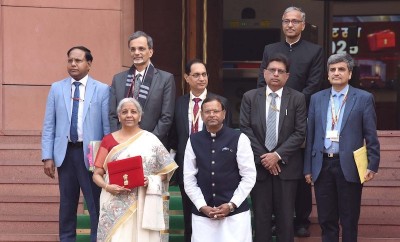
World Bank approves support to vocational training across India
STRIVE is a five-year government program which will help improve the performance of ITIs; increase the capacities of state governments to support them; improve teaching and learning; and broaden Apprenticeship Training. This Program will support vocational training in 300 ITIs and 100 industrial clusters and improve state systems in all ITIs across India.
Over 40 percent of those enrolled in ITIs and apprenticeships come from families that live below the poverty line. The STRIVE Program will help broaden the range of training options available to them and create a more conducive learning environment – important for attracting more young women and youth from vulnerable population groups.
“Expanding and improving formal long-term skills is essential for India to create a globally competitive workforce,” said Junaid Ahmad, World Bank Country Director in India.“This Program will also focus on inclusion, by providing greater opportunities for India’s youth, particularly women and underserved communities.”
Recent studies estimate the demand for skilled workers at 400 million by 2022, of which 150 million are required in the manufacturing and services sector alone. With over 13,000 institutions across India, ITIs represent the largest network of technical training providers in the country. However, they face a series of challenges in adapting to increasingly dynamic industry demands. The formal apprenticeship system is an important but under-used resource for workplace exposure and relevant on-the-job training.
A striking feature of India’s labor market is the extremely low (31 percent) female labor force participation. More than 50 million of India’s young women are neither studying nor working and they constitute less than 9 percent of the enrollment in most ITIs.
To realize the benefits of a skilled workforce, further efforts are required to harness the full potential of its large youthful population.
The Program will modernize formal apprenticeship training in India and strengthen the role of industry, especially small and medium enterprises (SMEs) in improving and developing needs-based Apprenticeship Programs. It will also help increase quality and relevance as well as financial and administrative autonomy of ITIs; improve states regulatory and monitoring systems for skills development; reduce teacher’s vacancy rates; facilitate industry training for teachers in ITIs, among others. STRIVE will also invest in introducing state of the art technology-based teaching and learning resources in ITI training, developing online and distance learning modules for technical teachers training and upgrading technical teachers training institutions.
“Research has shown that youth who undergo some form of formal training tend to earn nearly 18 percent more compared to those with only a grade 10 or a grade 12 education. Beyond the direct benefit for the trainee, the development of a globally competitive manufacturing sector requires a cadre of comprehensively skilled technicians, said Muna Salih Meky, Senior Education Specialist and World Bank’s Task Team Leader for the Program. “The Program is also expected to contribute to increased diversity and reduced inequities in the workforce.”
The credit is from the International Development Association (IDA) – the World Bank’s concessionary lending arm with a maturity of 25 years, including a 5-year grace period.
Support Our Journalism
We cannot do without you.. your contribution supports unbiased journalism
IBNS is not driven by any ism- not wokeism, not racism, not skewed secularism, not hyper right-wing or left liberal ideals, nor by any hardline religious beliefs or hyper nationalism. We want to serve you good old objective news, as they are. We do not judge or preach. We let people decide for themselves. We only try to present factual and well-sourced news.







